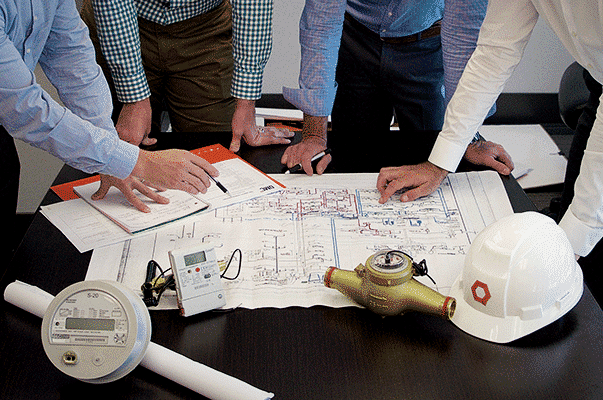
A recent McKinsey & Company report, Greening the Future: New Technologies that could transform how industry uses energy’ describes 33 innovations that could help industry significantly improve its use of energy. At the top of the list, two technologies that all industries could benefit from is an energy management system and advanced analytics. The estimated impact was savings of 2% – 5% and a payback in two to three years. Excerpt from the full report here.
Energy Management systems monitor equipment and can help improve performance: alert a building operator to loads operating outside of building operating hours; review load profiles to schedule the start-up of equipment more efficiently to reduce overall peak demand or identify “disproportionate” utility usage from tenants. Compteurs pay an important role in energy conservation; as consumers gain an understanding of how they use energy they are more likely to be more efficient in utility usage. Advanced analytics, through the automated conversion of data to reporting either in real time or post event, makes turning information into intelligence and actionable insights easy.
Business leaders may find interesting the authors’ five principles that can assist with decision making related to the adoption of new technologies for energy efficiency. From the McKinsey & Company report, Greening the Future: New Technologies that could transform how industry uses energy, August 2015: These 5 principals help make sense of what technologies to use and how to put them into long-term practice:
- Think lean. Build a resource-productivity strategy within the organization. Lean thinking and green thinking are based on the same fundamentals and work together well. For instance, an Indonesian power plant reduced its cost per megawatt by 7 percent in four months by creating performance indicators and then tracking them systematically.
- Think limits. Use the theoretical-limit concept—an analysis that identifies the lowest amount of energy required for a given process—to set ambitious but realistic goals. This fosters the kind of creative thinking that can deliver substantial resource-productivity improvements. One Chinese iron-and-steel enterprise reviewed its theoretical limits and analyzed its key sources of operational loss; on that basis, it changed its operations to use waste heat to generate additional power, significantly cutting its production costs.
- Think profit per hour. Review the full profit equation when making changes. Evaluate trade-offs such as throughput, yield, energy, and the environment as a whole—changes in one will likely affect the others. Profit should be the main factor in making final decisions. By applying advanced statistical analysis, a pharmaceutical company was able to increase its yield by 20 percent while using the same amount of energy.
- Think holistic. Making and sustaining change is not only a matter of technical improvement; it also means changing mind-sets, behaviors, and the management system throughout the organization.
- Think circular. Consider your product as a future resource that can be used repeatedly, moving from the usual linear supply chain toward supply circles. A global data-services company applied the “think circular” principle by using analytics to design a facility that streamlined energy to its most important function. This resulted in more capacity and less capital expenditure.
Developers, property managers, and consultants work with us at QMC to design and implement project-specific energy management systems that conserve utilities and save money. QMC has both hands-on experience in the field, and extensive knowledge of utility billing, analytics, and conservation.